This is one of my most-requested reviews, largely due to what one reader described as its “transformational” aspect. I very deliberately wrote the review to serve as a resource which would actually improve the quality of the book for those who read it. Given the feedback I’ve gotten over the years, I apparently succeeded at this goal. One reader told me that I had “salvaged” the game for him and that he had gotten a pretty awesome campaign out of it.
Some readers have accused me of somehow “cheating”; or that this sort of critical content is somehow inappropriate for a review. But while I believe that the primary goal of a review is to inform a reader’s decision on whether or not to purchase the product, I was also heavily influenced by the writing of Harlan Ellison and Walter Kerr: Reviews have the ability to be the forum for a more valuable critical discourse.
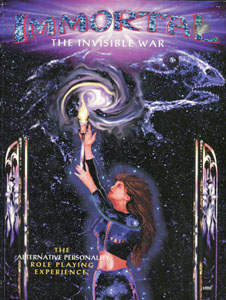 Reviewing this game is one of the most difficult writing tasks one could have — because you, the reader, are almost certain to come away with the wrong impression.
Reviewing this game is one of the most difficult writing tasks one could have — because you, the reader, are almost certain to come away with the wrong impression.
I am going to tell you that the setting for this game seems to be an amalgamation of all the different White Wolf games with a bit of primal myth, a dab of the Illuminatus Trilogy and a touch of the Highlander movies thrown in . . . and you’re going to misunderstand me and think I’m saying the setting is just a cheap rip-off. It isn’t.
I am going to tell you that the rules are beautifully integrated into the world . . . but good luck figuring them out without reading through them a dozen or so times because they are laid out poorly and organized worse. But the rules are excellent, and it will be well worth your effort to root them out.
I am going to tell you that the setting is detailed . . . but is difficult to understand because it appears the designers assumed you were already intimately familiar with it before sitting down to read this book. Yet the setting is so rich, that it is worth working your way around the holes and puzzling through the details.
I am going to tell you that whoever was in charge of editing this book should have his head examined because both setting and rules are almost impossible to follow . . . and you’re going to think I’m telling you not to pick the book up. You definitely should.
The problem is that everything which is bad about Immortal is imminently simple to qualify and explain . . . while everything which is good about it is all too easy to be glanced over and misunderstood.
So, what’s Immortal‘s strengths? Its setting. Its rules. Its attitude. Its potential.
And what are the weaknesses? The lay-out, the organization, and the presentation.
I’m going to split the remainder of this review into three sections: The Problem With this Game, The World, and The Rules. We’re going to deal with the problem first and get it out of the way.
THE PROBLEM WITH THIS GAME
Reading through this book is like trying to learn differential equations while maneuvering through an obstacle course. The principle failing — in my mind — is the poor structure given to the setting. You have a modern world coldly mirrored in the style of White Wolf’s World of Darkness, but which delves even deeper into the primal depths of history and mythology to give depth and character to the world, along with a mix of Illuminatus-style hidden societies and plots within plots within plots, plus a good dash of pseudo-dimensional travel and strange, otherworldly places. Once you’ve given this world a detailed history which extends over 65 million years, you’d think you’d have a setting which was so rich and deep that you’d have material to play campaigns in this place for years to come.
And you’d be right . . . if you can get past the fact that following the material is next to impossible. Like many other games, Immortal drops you into the middle of the world in media res — what the writer apparently forgot, however, was that other games which do this will quickly, after the initial shock of exposure has been played up, explain what the basics of the world are like before delving into ever increasing depth. With Immortal you never get that basic primer, you just keep delving deeper and deeper. The problem is, in fact, made even worse by the fact that the Immortal setting is so incredibly rich — just when you think you’ve finally got the basic architecture down an entirely new level is revealed, more complex the one you just figured out. This effect lasts up to the very end of the book and is much like reading the Illuminatus Trilogy and hoping, after your first read, to have figured out what’s really going on — a trait which is charming in the novels, but slightly upsetting in a game setting which you have to understand in order to run it for your players. You will need to read this book through two or even three times before you finally have more than a verysimplistic , hazy picture of the world.
The problem, when you come to the rules, is even worse. For some unknown reason they blend the rules through a major portion of the book — switching seamlessly between rule and setting. So the rules aren’t all in one place and nicely pulled together. As you try to puzzle out ever-increasing complexity in the game world, you are given the further puzzle of trying to figure out the mechanics as well. The mechanics are sufficiently different from most mechanics which you will be familiar with from other games that you will not catch them all on your first time through. However — just as with the setting — the mechanics are worth your efforts. I suggest, after you have figured them out, constructing a cheat sheet so that you can have them all in one place. (You might even want to do this with the setting — trying to organize the material into a format from which it is easily accessible.)
None of this would be indomitable, of course, if it weren’t for the fact that a very crucial element is missing: An Index. We have all complained about games which lack decent indexes, but Immortal doesn’t have one. At all. “Well,” you think, “I’ll just look at the table of contents, see if I can find it that way.” Not effectively. The book is composed of thirteen very large chapters, plus an appendix — and information is, as I’ve said, spread willy-nilly throughout them. The table of contents gives you only the chapter titles and page numbers.
This game, as I’ve said, has a very rich, deep character to it — which means there is a plethora of alien terms and important individuals. It would be nice to have an easily accessible glossary to refer to (particularly since they have a nasty habit of referring to an individual, term, or historical event dozens or even hundreds of pages before explaining what it is).
They do have a glossary. In fact they have two. One runs sporadically along the bottom of the first 260 pages in alphabetical order. Another runs sporadically along the side of the first 160 pages (with the occasional rule reference thrown in just for kicks) — this one is not in alphabetical order. The two glossaries are generally, but not always, mutually exclusive — which is also unfortunate because while the one along the bottom of the page is direct and to the point, the one along the side of the page generally takes the form of an interesting quote which usually does very little to actually inform you about the term in question.
Have I convinced you that understanding and referencing this game will be an absolute hell on earth? Good. Now let’s move onto the portions of this game which contain sufficient reasons to ignore all the weaknesses discussed so far and buy a copy.
THE WORLD
I am about to explain the game world to you in a very short, very direct, very easily understandable way. In so doing I will have vastly improved the game for when you actually purchase it, because this is the exact sort of basic primer and guideline which is missing from the book. In fact, save this review right now and refer to this portion of it (and the rules portion below) before reading the book itself. It will make much more sense to you. There is much more to the world than what I am describing to you (it is one of the richest game worlds I have encountered), but these are the basics which will help you understand everything else.
There are eleven distinct regions to the Immortal universe: The Habitat, the Crucible, the Dominions, the Blue Air, the Mantles, the Morpheum, Sheol, the Underworld, the Sunedrion, the Ys, and the Maelstrom.
The Crucible is a sphere which surrounds the planet and is also all around us — it is the wellspring from which all the energy of life comes. This energy of life is known as Immaculum and it forms the characteristics of the physical body and mind. The Immaculum of all living creatures is held in a multi-hued Halo around the body. The colors and strengths of the Halo determine the physical and mental characteristics of a living creature — Red is Resolve, Orange is Force, Yellow is Expertise, Green is Movement, Blue is Awareness, and Violet is Resilience.
65 million years ago a creature known as the Sanguinary left or was exiled from the Crucible and came to our world — a place which members of the Perpetual Society refer to as the Habitat. When it did so it shattered into what are known as Conundrum. It did not die, however, and its evil influence continues to infect the Habitat to this day through various Avatars.
Throughout history creatures have — by accident or design — symbiotically joined with the Condundrum. Those that have done so become immortal. The first great immortals were the Abzulim — members of the Saurian species who hunted the other dinosaurs to extinction 62 million years ago.
60 million years ago a great tree reached its roots down into the Crucible and became sentient — it became known as the Sunedrion. Wherever it spread its seedlings and its influence became known as the Dominions, places where the culture of the original Immortals were preserved for millions of years.
Over the ensuing years other species joined with shards of the conundrum, gaining sentience and immortality. A few general details on Immortals are now in order. It is important to note that with this immortality came the ability to change shape — so many of the immortals were originally wolves or spiders or bears or tigers. This primal form — an aspect of the Immortal’s soul — is known as the Himsati, and may be reverted to at times. It is a feral quality and the contamination of the Sanguinary which remains within the Immortals.
Immortals are personified by their Vox — their voice. Silencing an Immortal’s vox by cutting off their head is the only means of slaying am Immortal. But when you slay an immortal, you do not truly destroy them — they, instead, return to the ethereal realm of the Blue Air as Gossamers. Gossamers are ephemeral beings unable to interact with the physical world until they can regain physical form — which they can do by returning or remaining in the Habitat and collecting immaculum.
The Immortals have also perfected a set of rituals known as Serenades. As the rulebook says: “The Abzulim, over millions of years of flourishing and decaying, peered deeply into the crucible, watching the loom upon which the universe was ceaselessly spun.” Common ‘threads’ of the universe were called Attentions, and by manipulating these attentions through the use of serenades exploiting the power of the vox and the immortal’s immaculum, the immortal is capable of changing the world around him. However, the danger in performing a serenade is that you are tampering with the world — and the immaculum which you use to accomplish that tampering become Tainted. This Taint renders the immaculum unusable in the Habitat until it can be removed or the affected immaculum expunged from the immortal. The Taint is the evil touch of the Sanguinary, and through it the Sanguinary gains control over the Immortal and is capable of reducing them to the Himsati form.
Immortal society is organized into various Prides — each Pride consisting of a similar belief system.
Twilights (the Immortal term for mortals) have an ability known as Religarum — the superstition and/or belief of the mortal made tangible, it gives the Twilight the ability to physically alter Immortals through unconscious or deliberate choice, making use of the mortal’s lust, fear, belief, or need.
Finally, Immortals also have a rite known as Lethe — by which they forget their previous existence and assume the guise of mortality. Each time they enter Lethe, however, they are essentially splintering their personality — and each personality can never be completely removed thereafter, becoming subconscious avatars to which the current intellect of the Immortal can temporarily grant or control . . . or even completely lose control to.
The Abzulim immortals raised a great society, but they came into conflict with the Primals — immortals who were not born of the symbiosis of conundrum and animal, but the symbiosis of conundrum and the elemental matter which makes up the Maelstrom. The supremacy of the Abzulim finally came to an end in a great war 7 million years ago.
A final element of the ancient Immortal cosmology are the Trine. Like the Sanguinary, the Trine are three creatures called forth from the Crucible — this time by members of the Immortal pride known as the Anopheles. The Trine are three creatures: The Leviathan, the Dracul, and the Rukshasa.
In 400,000 BC a millenia-long plot of the Sanguinary came to conclusion. For aeons the Sanguinary had been acting through his mortal and immortal subjects to cut down the Sunedrion and transform its sap into what came to be known as the Malice Shard. Pride Anopheles rode against the Sanguinary’s forces and destroyed the Malice shard — but in so doing they separated the twin worlds of the Habitat and the Dominion, setting the realms of the Dominion adrift within the Blue Air. The great Immortal societies of primeval history came to an end at this time.
Then, in 320,000 BC, Humans managed to destroy the Red Shard — the shard of the conundrum which still contained the heart of the Sanguinary consciousness. The Sanguinary narrowly avoided destruction by fleeing into the Morpheum — the land of dreams. Mortals enter the Morpheum whenever they enter REM sleep, and have hence — in the eyes of the immortals — subjected themselves to influence from the Sanguinary which makes them potentially dangerous allies. To Immortals, dreaming and entering the Morpheum is an intense pleasure, but a pleasure now denied to them because of the subjection to which the Sanguinary can curse them if they enter the Morpheum untrained.
In 65,200 BC, a conflict known as the Shouting War broke out throughout the Dominions. A plague known as the Lash was born of the taints incurred by the massive use of serenades during this conflict. In 50,000 BC, the Lash reached its peak, destroying and desolating the Dominions and sending Immortals fleeing into the Habitat. In 10,200 BC, the Shouting War comes to an end as Pride Nimrod emerges supreme above the other prides, locking them with Sheol — a dark place where the Sanguinary first came to our universe.
During this time two more important events take place: The emergence of the second avatar of the Sanguinary (the Dust), and the emergence of the Apocrypha and Quiet Culture.
The Apocrypha were a group of mortals initiated to the knowledge of the Immortal world by Pride Magdalen. Breaking free from Magdalen control they committed themselves to the absolute destruction of Immortals within the Habitat. Another group almost immediately broke off from the Apocrypha, however. Known as the Quiet Culture they, too, know of the Immortal world; but instead of trying to destroy it, they seek to aid and even worship Immortals.
In 7000 BC, Pride Banjax escaped from the prison of Sheol and freed the other prides imprisoned there. Within another thousand years, however, conflict between the prides was again on the rise — and a new society was brought into being. Powerful Immortals known only as the Jury imposed a structure known as the Stratagem upon Immortal life — instead of actively killing other immortals, and hence risking Taint and strengthening the Sanguinary, the Stratagem calls for “calling coup” upon other Immortals and other Prides. The pride who wins the most respect under the rules of the Stratagem and in the judgment of the Jury will be the pride to lead all Immortals when the day comes to lead the attack against the Sanguinary. Part of this is the Silence — an imposition to never use serenades in a manner which draws the attention of the Sanguinary. Having established the Stratagem, the Jury withdrew into the Dominions — places where other Immortals rarely go willingly.
In 5900 BC a period known as the Mingling began. Immortals went to Atlantis — a society founded by the Immortal Solitaire — and lived in peace and tranquility with one another. In 4735 BC, however, Atlantis was destroyed and Solitaire assassinated. “Disillusioned, Immortals filtered back into the Habitat.”
The pace of things begins to pick up in the modern world, and I am going to skip over many details. In 1666 AD, however, the Dust is cornered in London and the Great Fire is started in order to destroy it. This effort is successful.
Shortly thereafter a period in Immortal history began which came to be known as the Exodus — extending from 1666 to the present day, it’s a time when thousands upon thousands of Immortals entered the state of Lethe. Pride Magdalen is suspected of initiating this movement, but no one is sure.
In 1925 AD the third avatar of the Sanguinary — the Silhouette — appears. In 1990 AD the Femme Darkle — an artifact containing pieces of the Malice Shard — is stolen, initiating the Invisible War. It is believed the final days of judgment for the Immortal race are approaching, when one pride shall emerge as a leader to destroy the Sanguinary forces . . . or be destroyed by them.
In 1994 (the year the game was published), the Exodus came to an end. Immortals awakened from Lethe and re-entered the Perpetual society. It was the beginning of the Waking Age.
This information is the barest glimmerings of the full picture of the Immortal universe. Some of you have probably already noticed I have completely glanced over the realms of Ys (the world under the oceans), the Mantles (areas hidden from mortal eyes which preserve the world of the past as if it still existed today, maintained by the long-lived children of mortal and immortal unions), or the Underworld (a hidden world beneath the surface of our own) — but these are all fascinating places in their own respects. I have not discussed the origins of the prides — although some of these are fascinating and amazing. I have barely scratched the surface, and will not be able to tell you more here. As I have said before, this world is a rich tapestry which I encourage you to experience.
THE RULES
The rules of Immortal clearly demonstrate why rules specifically tailored to a particular setting will outshine any of the generic rules currently on the market. A well-constructed set of rules for a setting creates the feel of the universe for those playing it. Rolling dice is hardly the same thing as performing stunning martial arts maneuvers – yet that’s the feel the Feng Shui system manages to convey. Similarly, comparing attributes is hardly the same thing as the careful interplay of rapiers – yet that’s what Amber accomplishes.
Creating a character who has lived for centuries and is now just realizing that fact is not the same thing as actually being a person who has lived for centuries – but that’s what Immortal does successfully.
Ironically the exceptional rule design of Immortal, when combined with the poor layout of the entire product, only adds to your feeling of confusion and muddiness. You can be reading what you think to be a section of the book dealing with the background of the world, only to suddenly discover that these are actually rules. It would be a refreshing change from many games, where you feel as if they got together and designed the setting, and then designed the rules separately and in a complete vacuum – hoping that somehow the two would magically come together like Peter Pan and his shadow – except for the fact that due to poor layout this effect is lost to general frustration as you try to figure out what the hell you’re reading.
Character creation in Immortal takes place under an absolutely fabulous point-based system. I know I’ve used the word a lot in this review, but it bears using once more: Ironically, the points themselves are the only really questionable portion of the Immortal rule system. The character creation rules assume that the PCs are characters who are just emerging from the state of lethe and the character creation points are therefore referred to as MEMORY POINTS – with the idea being that as you spend them your character is “remembering” skills and abilities from their previous existence. This mechanic has a very good feel to it . . . what it desperately needs, however, is a complementary set of points in order to represent the learning of new skills (if my character went into lethe back in 1672, I’m not going to “remember” my skill at computer programming). Despite this slight conceptual jar, the system itself works just fine – you can purchase computer programming with memory points just as easily as swordfighting.
Remember our discussion of immaculum and halos back in the world description? How immaculum in the halo created the physical and mental traits of an individual? Red was resolve, orange was force, yellow expertise, green movement, blue awareness, and violet resilience. It should come as no surprise that setting the attributes of a character in Immortal is a process of assigning IMMACULUM to each of the six colors in a character’s HALO.
Units in Immortal are referred to as MOTES. Motes are “attributed to memory, immaculum, or other aspects of the mechanics” and, conceptually, “are visible in the halo of an immortal as revolving sparks of colored light.” This is exactly what I’m talking about – if there’s a rule in immortal nine times out of ten it means that there’s a world-equivalent reason for its existence. With the exception of dice rolling itself, nothing is there as a simple abstract quantification.
There are two types of immaculum motes in a character’s halo – FORTE are motes which are fixed to a particular color/attribute, FREE IMMACULUM are motes which can be freely exchanged between halo colors to augment various abilities. Of course free immaculum costs more memory points to purchase, and creates a more powerful and versatile character. All characters start off with 15 points of forte in their halo, which can be assigned to any of the six halo colors/attributes.
TALENTS are the learned abilities of characters, and are – similarly – purchased through memory points.
The resolution mechanic of the Immortal system, however, is truly fantastic, in my opinion. It uses nine different colors of ten-sided dice: Six for each of the colors in a character’s halo (red, orange, yellow, green, blue, and violet) as well as three more (black, gray, and white) for a special type of serenade. Ignoring the black, gray, and white dice because this summary is not going to attempt to look at serenades, let’s take a closer look at how these dice are used.
Each color die represents one set of HOSTILES. The idea is basically familiar to most roleplayers. Given a standard set of average circumstances a character will generally succeed automatically, but when complications arise in the environment or someone else is resisting the attempted action DIFFICULTIES arise, and these difficulties are quantified as numbers which negatively affect the dice rolls used to determine success or failure. The difference between Immortal and other systems is that these difficulties are assigned to one of the HOSTILES – for example, if a thick fog is responsible for the GM assigning a difficulty to a task that difficulty would be assigned to the Blue hostile since it would be impairing the character’s Awareness.
Once all the difficulties for an action have been assigned to hostiles, the hostiles which have difficulties assigned to them are rolled. Add to the result of each of these the number of immaculum motes assigned to the applicable color in the character’s halo (both forte and free immaculum which has been assigned) as well as the applicable talent for the action being accomplished. The resulting total on all the hostiles must exceed the difficulty assigned to that hostile, or the action will fail.
In short, from character creation through action resolution this system has been designed to not only make playing in the world possible, but to evoke the feeling of living in that world. This masterful set of mechanics is marred by the poor layout, over analyzation, and general lack of clarity with which they are presented – but it is worth stripping away the mistakes of this presentation in order to find the core construct underlying it.
CONCLUSION
If there was ever a game which desperately cried out for a second edition, this is it. The world of Immortal is a rich tapestry which has been badly woven. Its rules are an elegant construction, which has been shoddily put together. Nonetheless, if you are willing to reweave the tapestry and repair the construct — you will be blessed with an exciting, deep, rich world and a set of rules which complement it perfectly. I heartily suggest the purchase of this book.
Style: 2 (Needs Work)
Substance: 5 (Excellent!)
Author: Ran Ackels
Company/Publisher: Precedence Publishing
Cost: $24.95
Page count: 296
ISBN: 1-885681-00-3
Originally Posted: 05/01/98
A second edition of the game — Immortal Millennium — was published in 1999. It didn’t fix the problems. Worse yet, it was split into four books which were never actually published in their entirety (as far as I know). In 2008, apparently, a third edition was attempted. It, too, was incomplete.
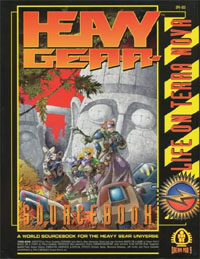 When you delve into science fiction or fantasy you will often find yourself encountering worlds either entirely separated from our own or at least placed so far in the future that the extrapolations from our current time have rendered them almost wholly different from what we know. When you encounter these worlds you will find that they often break down into two broad categories – those worlds which might actually exist and those worlds which have clearly been created merely to suit the whims of the author’s story and couldn’t possibly exist.
When you delve into science fiction or fantasy you will often find yourself encountering worlds either entirely separated from our own or at least placed so far in the future that the extrapolations from our current time have rendered them almost wholly different from what we know. When you encounter these worlds you will find that they often break down into two broad categories – those worlds which might actually exist and those worlds which have clearly been created merely to suit the whims of the author’s story and couldn’t possibly exist.
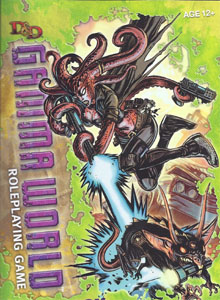
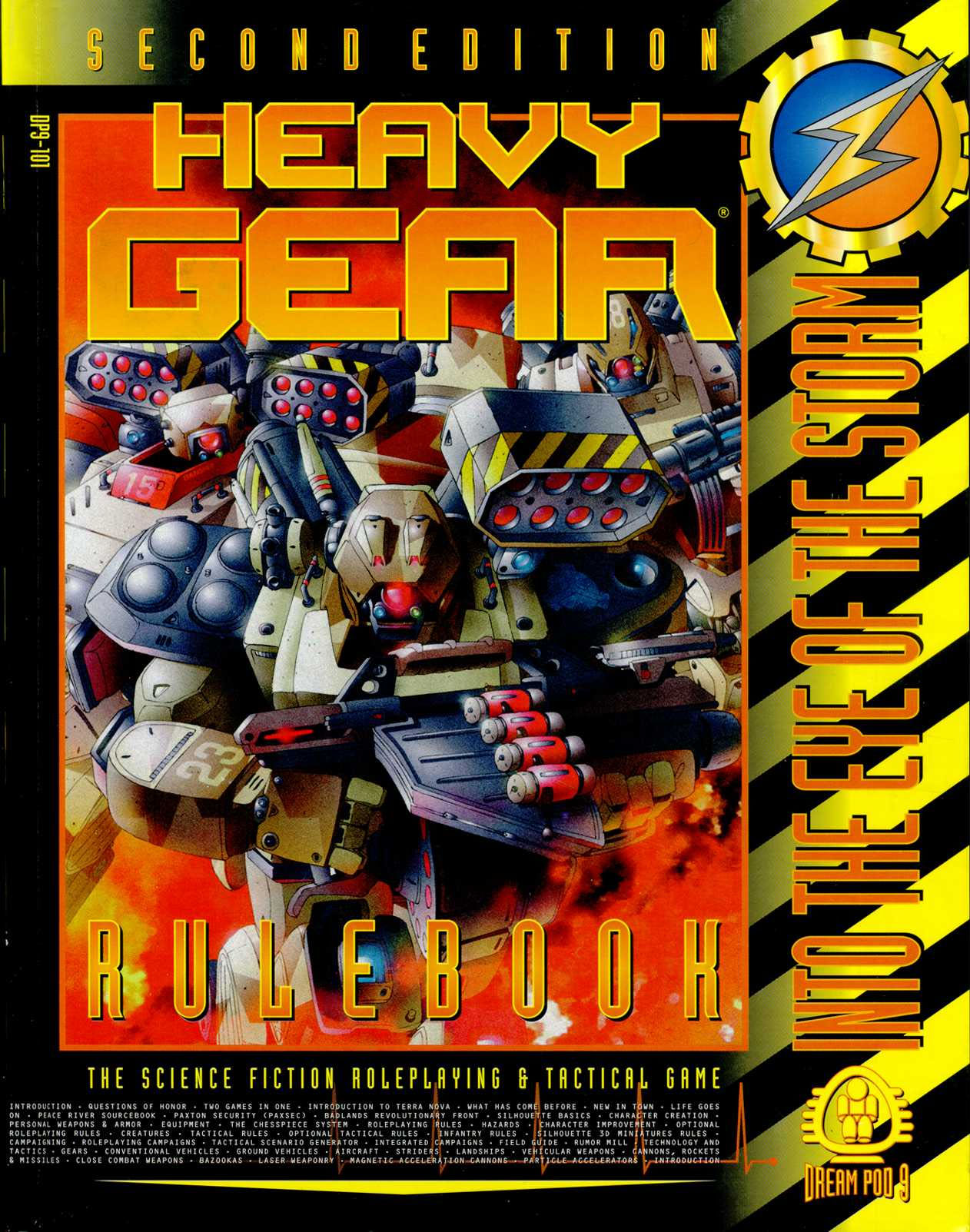

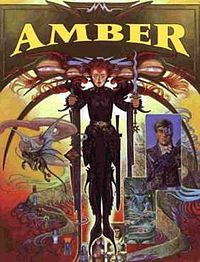 Amber: The Diceless Role-Playing Game
Amber: The Diceless Role-Playing Game









